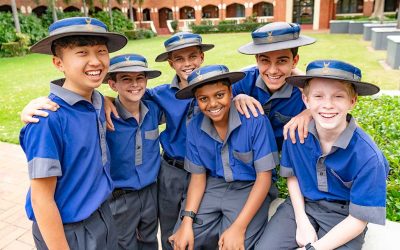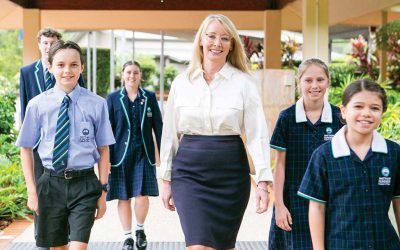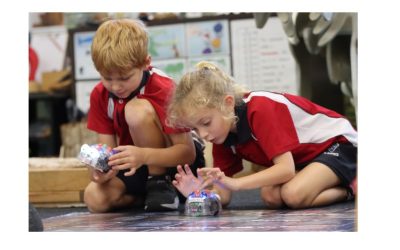As we head into summer, thoughts naturally turn to the sublime days ahead – swimming at the pool or the beach, maybe taking a tinny out on the lake, or fishing at the river. But ahead of all these much-loved aquatic adventures, keeping kids safe around water is paramount.
The latest Australian Royal Lifesaving Report found a 1% increase in adult drowning deaths in 2022/2023.
Thankfully, the number of drowning fatalities in young children (0-14 years) was 33-35 per cent below the 10-year average, highlighting the ongoing success of legislative changes to pool fencing regulations and water safety messages directed at the carers of young children.
However, as the research found, drowning fatalities happen in various activities that can’t be fenced, including boating, bathing, watercraft, and falling into bodies of water. Therefore, adequately learning to swim is paramount. As swimming instructor of 40+ years and water safety expert Chris Shapland from Shapland Swim School explains, swimming is a life-saving skill that empowers families to enjoy the Australian summer responsibly and confidently.
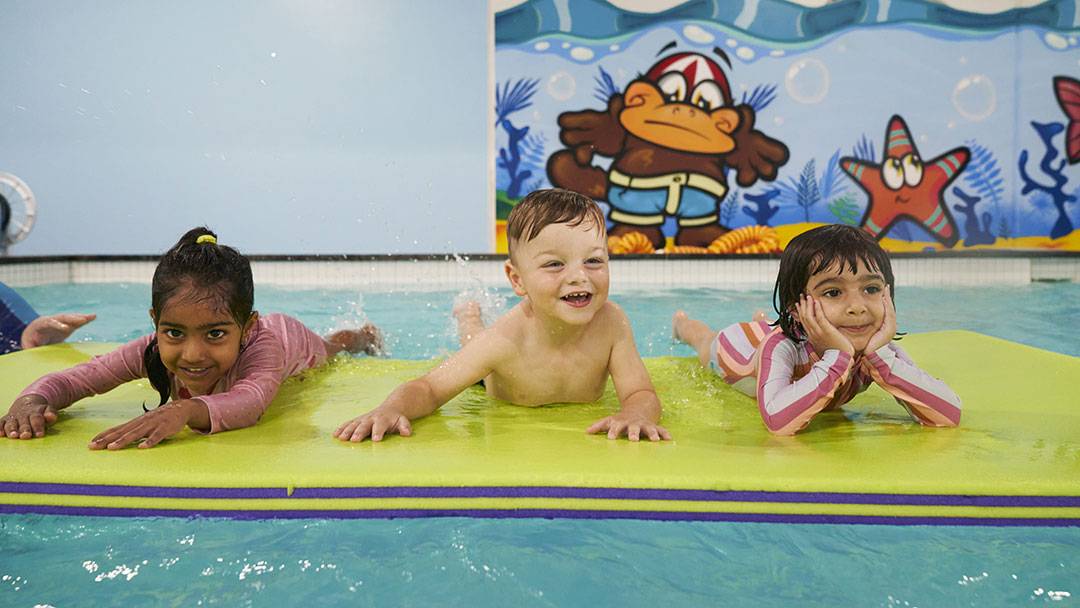
Learning to swim is fun! Credit: Supplied
Supervision is critical to water safety
Chris says that adult supervision is the first and most crucial step in water safety for kids.
“If every adult with a child around any body of water, including bathtubs, buckets, blow-up backyard pools, swimming pools, lakes, rivers, surf, had their child under constant supervision and within arm’s length, it would severely reduce the number of deaths by drowning,” says Chris Shapland.
How we live has changed over the years. Today, our time and attention are in higher demand; we are busier and more likely to be distracted by technology and multitasking. Therefore, this message of constant supervision feels particularly pertinent.
“Plus, for every drowning, there are several near deaths, which can result in devastating outcomes such as permanent brain damage. Again, these often come down to supervision. You can’t take your eyes off your children,” adds Chris.
Learn to swim … properly
All kids in Queensland learn to swim to a basic level. It’s part of the primary curriculum. However, there is still a significant discrepancy in how well kids learn.
“There seems to be a misconception among parents that once their child can fall in the water, turn around and swim back to the side of the pool, that they’re safe in the water. That is a dangerous perception. They might be safe in that pool, but the outcome could be very different if your child swims in an unfamiliar pool or more demanding body of water such as a lake or canal. Your child may get caught in a current, there might not be a side to reach for, or they may not have the skills to swim to safety. Plus, if parents happen to be distracted, kids need stronger swim skills to keep themselves safe for those vital few minutes.”
The National Drowning Report found that approximately 40% of children do not achieve the National Benchmark of swimming 50m by the time they are 12 years old. Yet Chris believes that benchmark isn’t nearly high enough.
“For kids to be reasonably safe in the water, kids need to be able to swim approximately 400 metres. That’s eight laps of a 50-metre pool,” says Chris.
And the older they get, the more adventurous the children will get. If they’re going to go surfing or engage in any water activity, they need to be strong swimmers.”
As the National Drowning Report shows, the environment where drowning occurs changes as children age. 71% of all drowning deaths in the 5-14 age group were males and occurred in either a bathtub (29%) or a lake/dam (29%). Comparatively, in the 15-24 age group, drowning deaths were still among males (83%) but occurred either at a beach (30%) or at a river/creek (30%). The leading activity before drowning was swimming and recreating (47%), followed by a fall into water (13%).
“By the time they are young adults, they need the level of technique and strength to cope in all situations, so it doesn’t matter which direction the wind is coming from or if they are caught in a rip. A whole range of skill levels come into play to facilitate a person being okay if they have an aquatic accident,” says Chris.
And this level of skills doesn’t come overnight. Like piano lessons or footy training, gaining those skills and confidence takes years of practice. And at some point in the future, these swimming skills may well save their life.
“As children move into different aquatic environments, they need different skills to match the environment. Learning to swim isn’t a task to tick off. Constant skill development and adaptation are required.”
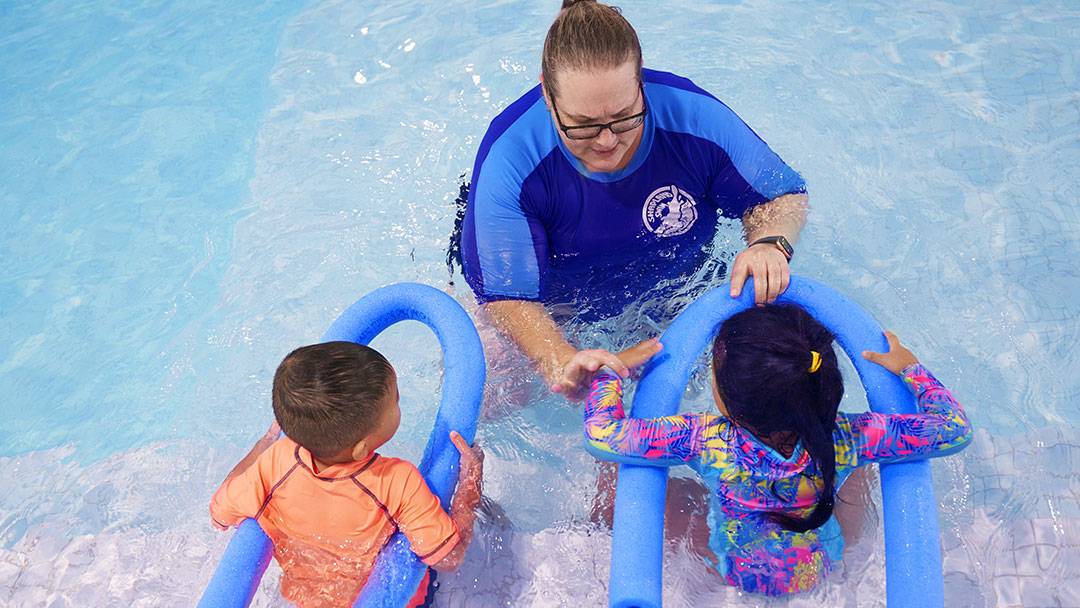
Semi-private lessons mean children get individualised teaching. Credit: Supplied
Which swim school you choose matters
There are varying swim schools available, each with its own approach. Therefore, choosing the right swim school for your child matters!
“Our pools are very different to the pools you will see at school or your local community aquatic centre,” says Chris.
“Each Shapland Swim School has a purpose-built indoor pool designed to enable our teachers to work with every student at the most appropriate level for their skill and confidence.
We do this by having a pool with eight to 11 different water depths, incorporating a series of steps. This means we’re meeting the child where they’re at. These gradual depths allow for progressive learning in a moderated way where kids can get confidence. We can introduce a child by increments of up to 50mm if necessary!”
“Once they learn that the water will always support their body weight, it opens up this whole new world to them,” Chris adds.
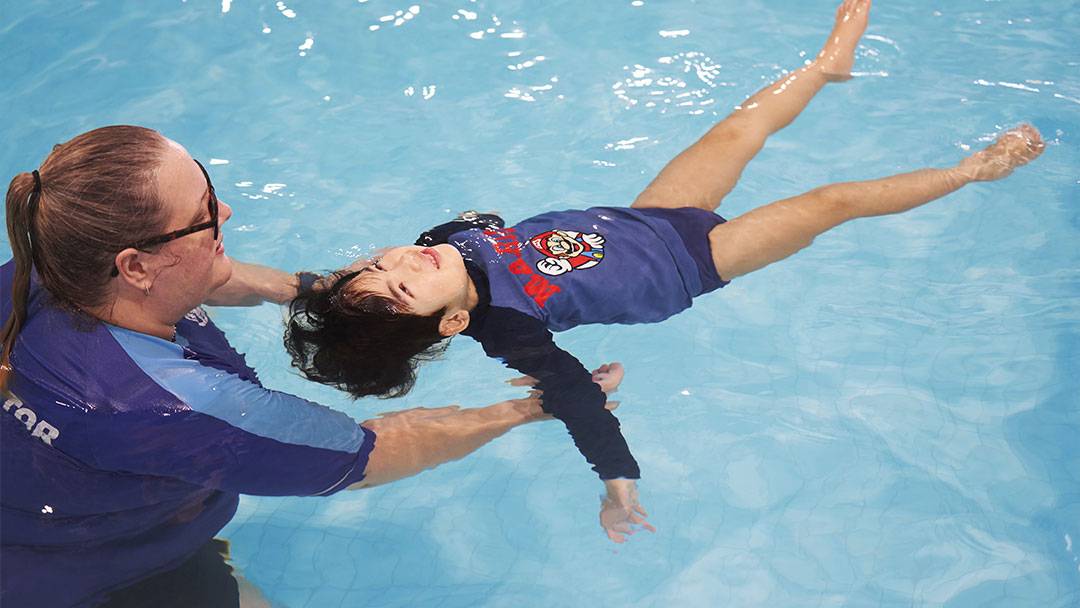
Child learning to float in the pool. Credit: Supplied
Swimming lessons need consistency and continual growth
To achieve such technical diversity, a child’s learn-to-swim program must include teaching a vast range of skills and offer constant progression.
“Just like the depths of our pools, our learn-to-swim program has many levels that all lead on from the next. This gradual and consistent growth helps children naturally improve as they become more confident in the water and provides continuity in their learning,” says Chris.
Shapland learn-to-swim programs start with the baby program, designed for children 5+ months old.
“The class structure for our baby program is built around the same learning process your baby goes through daily as they listen, learn, and engage with the world around them. We enhance this process to provide them skills to cope in the water and develop a positive relationship with the pool,” says Chris.
At two to three years old in the Toddler Program, children continue with the skills acquired in the baby program, transitioning to being in the pool without a parent and instead being supported by the swim teacher.
As the child’s confidence and skills develop, they move into the Preschool and Prep program, then the school-aged program. Each stage adds new stroke techniques and water safety challenges.
“We continually challenge them in a very safe and supportive way because children learn best from having a go themselves,” says Chris.
Then there is the advanced learn-to-swim program, designed for students who have completed the previous programs or are looking to join a swimming squad and wish to perfect their technique.
“Our kids never ‘finish’ swimming. There is always more to learn,” Chris says.
Water safety essentials
- Always supervise children in, on and around water
- Learn swimming, water safety and lifesaving skills
- Wear a lifejacket when boating, rock fishing or paddling
- Swim at a patrolled beach between the red and yellow flags
- Avoid alcohol and drugs around water
- Know your limits, the conditions, check the weather
About Shapland Swim School
Shapland Swim School offers a personalised service of semi-private classes. This boutique approach to swim lessons has evolved over seven decades of swim experience.
With locations across southeast Queensland, Shapland Swim School offers swimming lessons from five months to advanced skill development.
Related Stories
Why kids should continue swimming lessons in winter
Important skills your child will learn with swimming lessons
